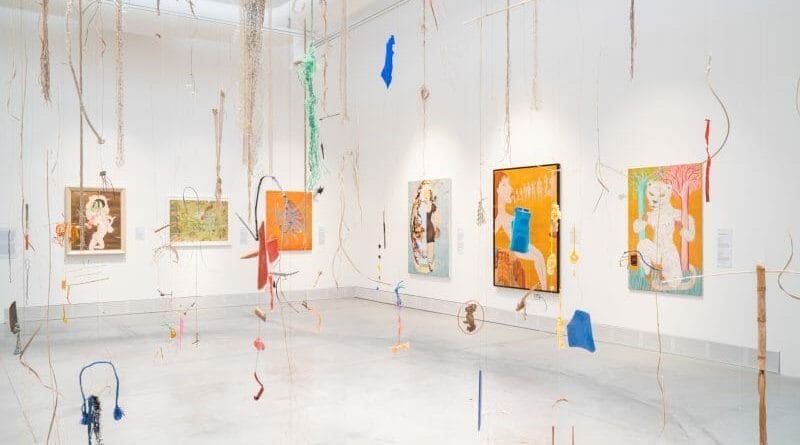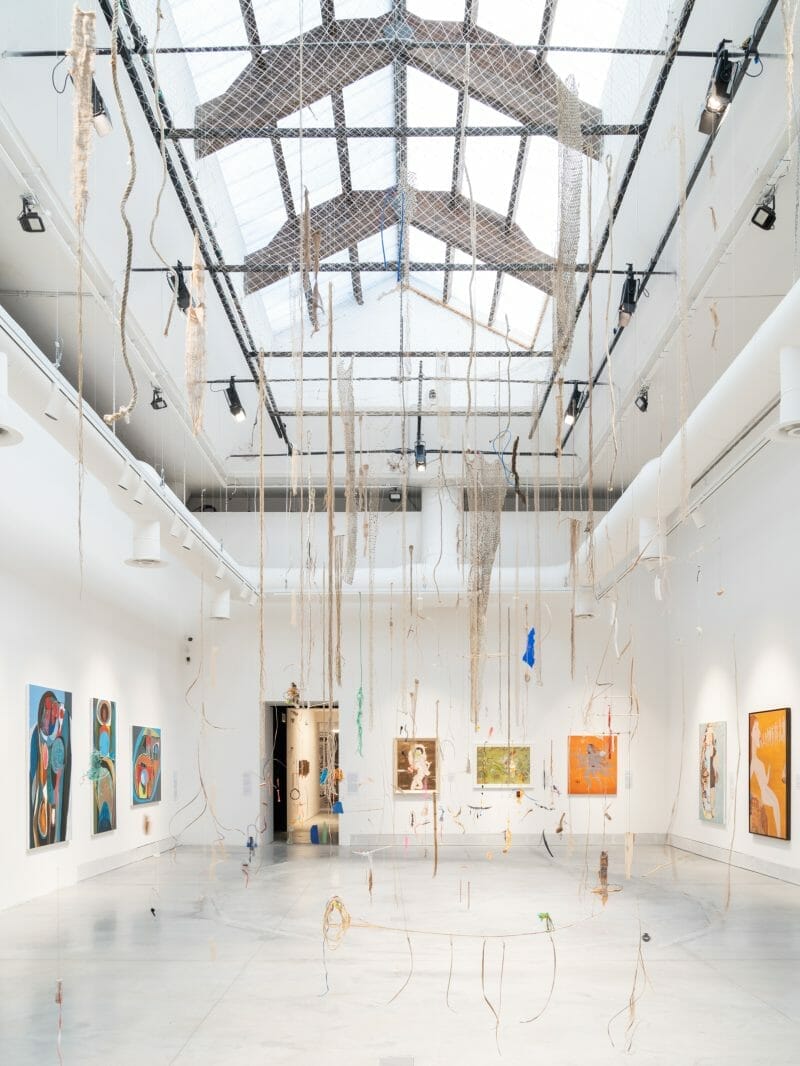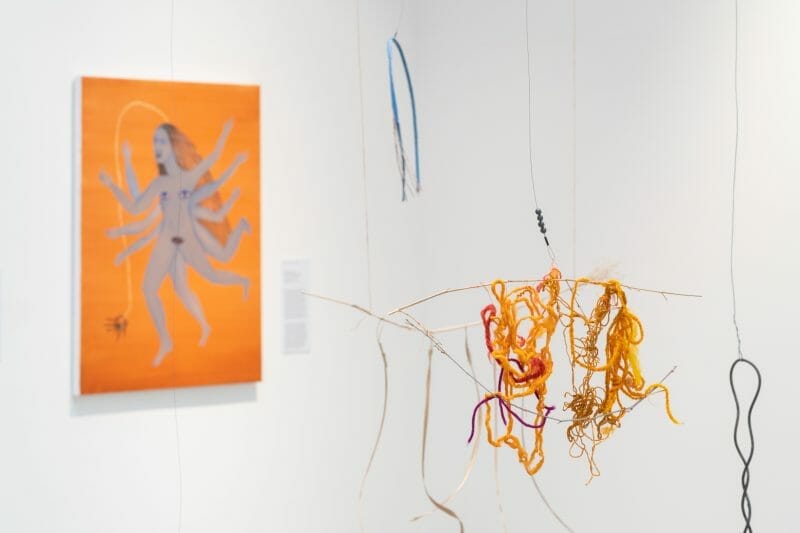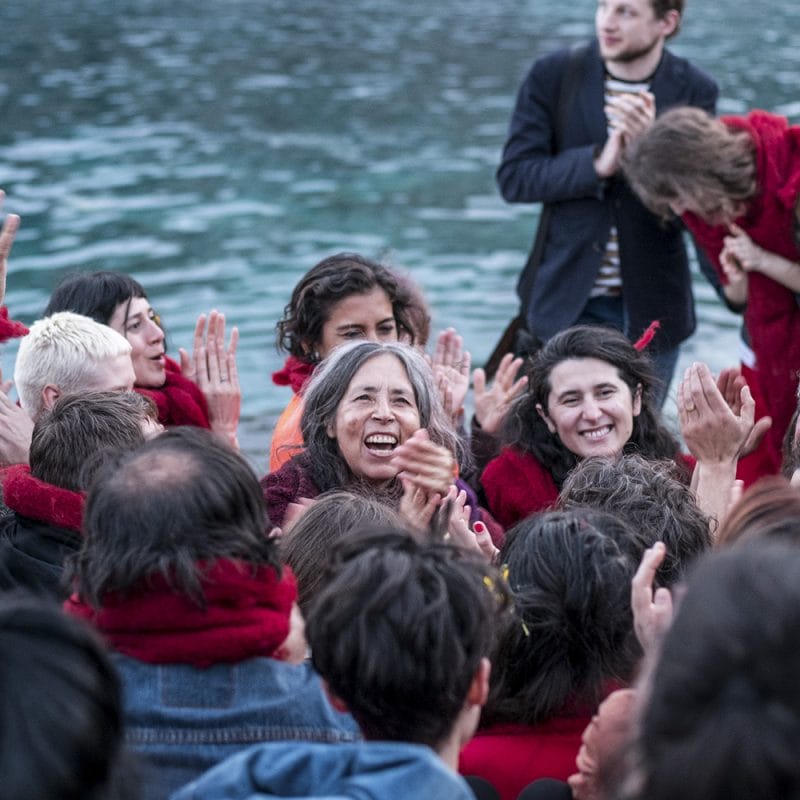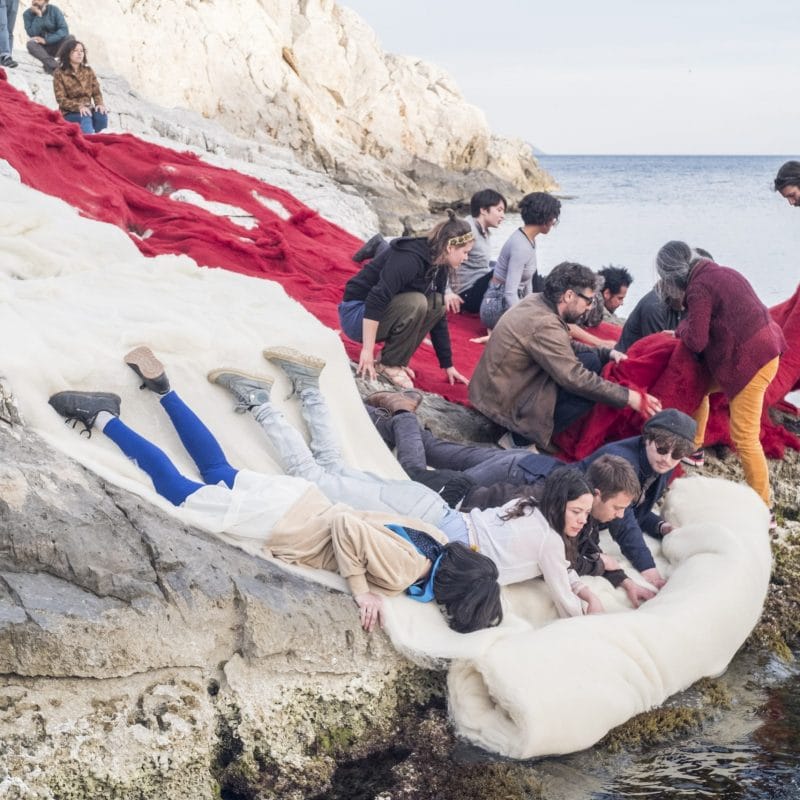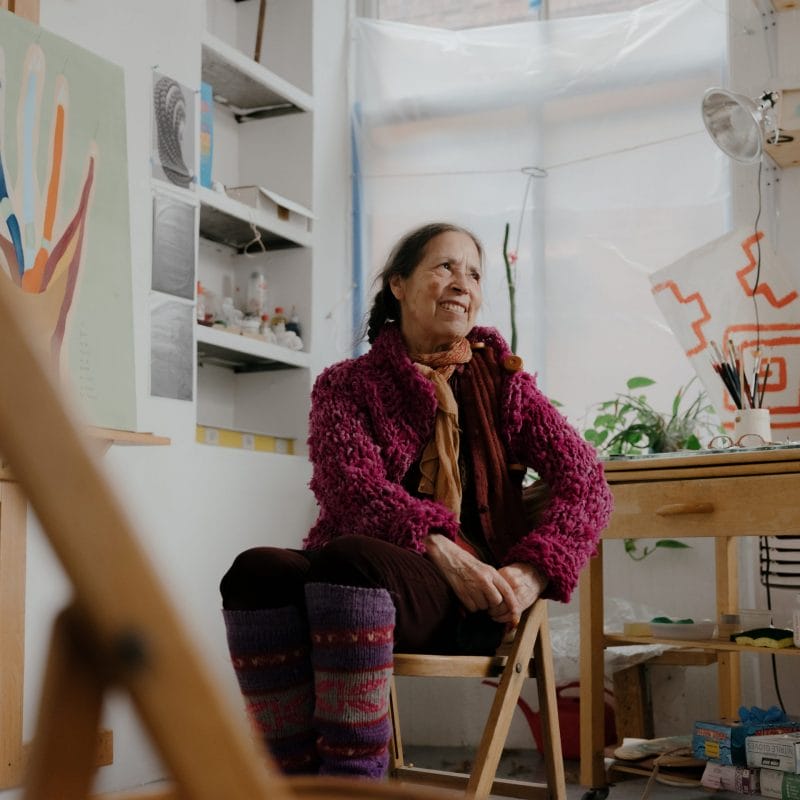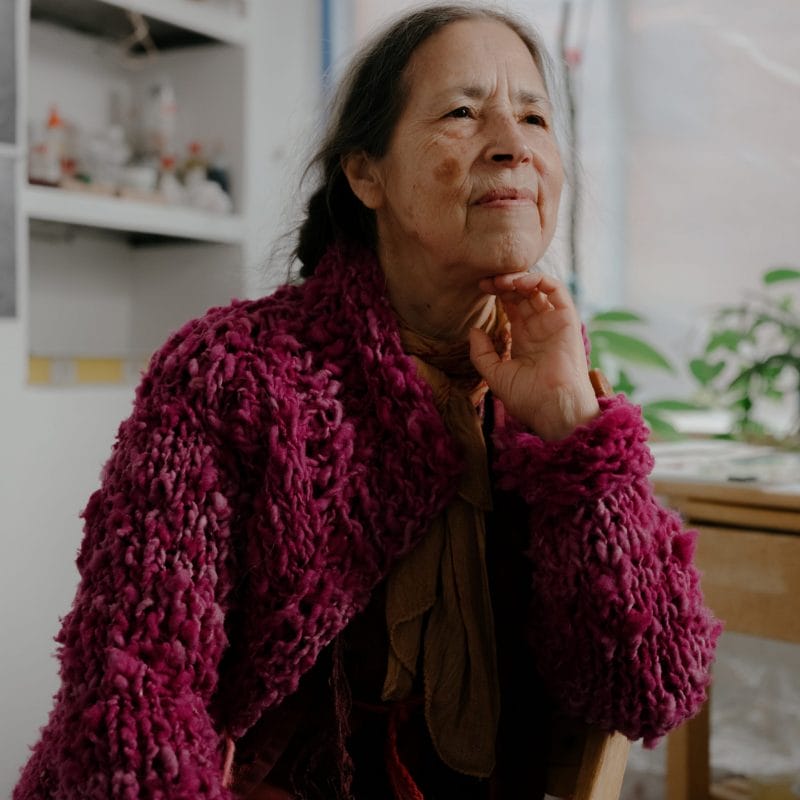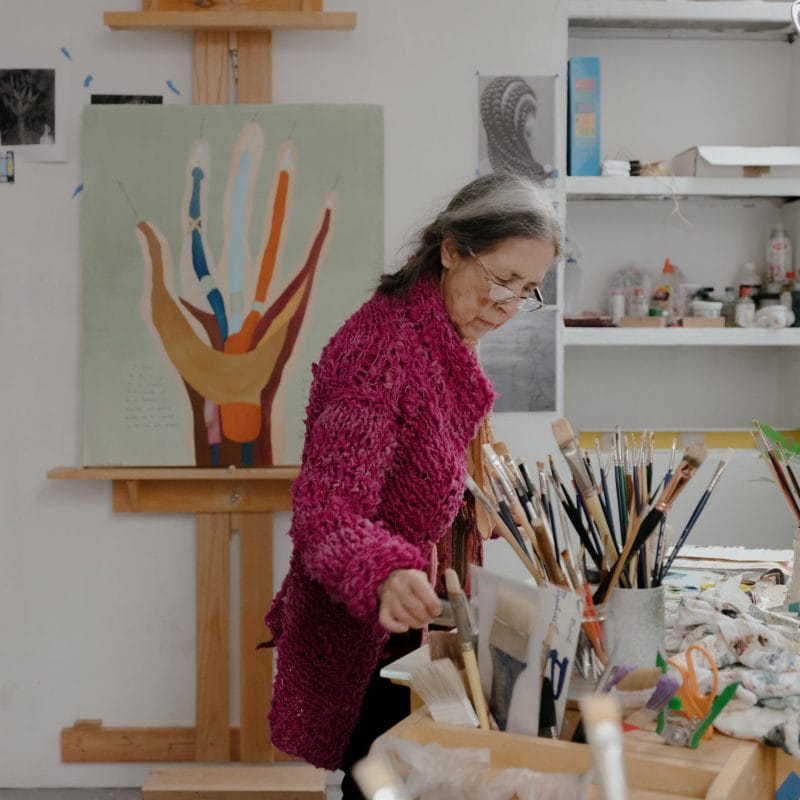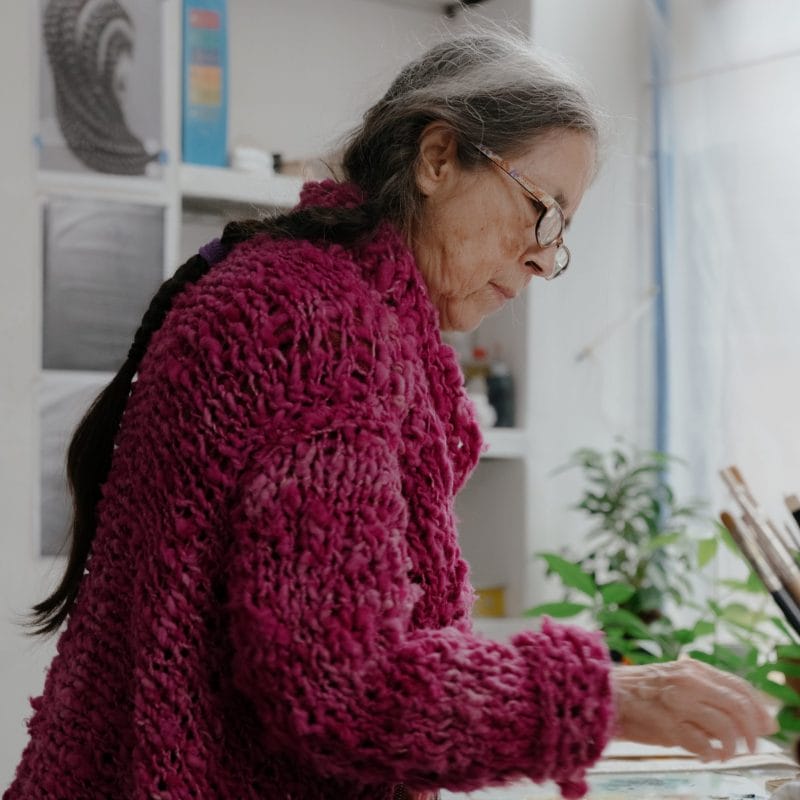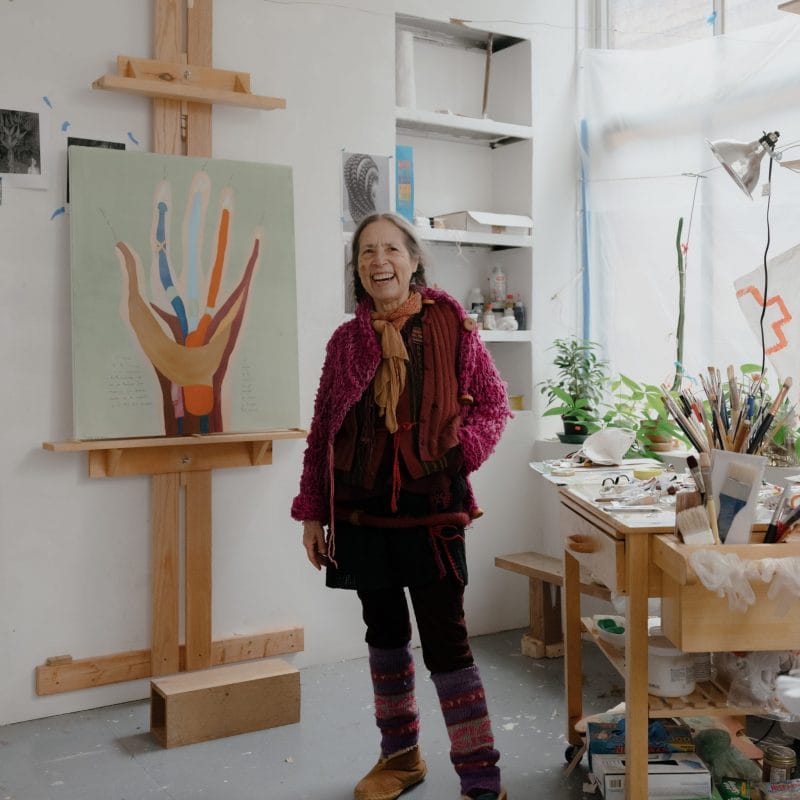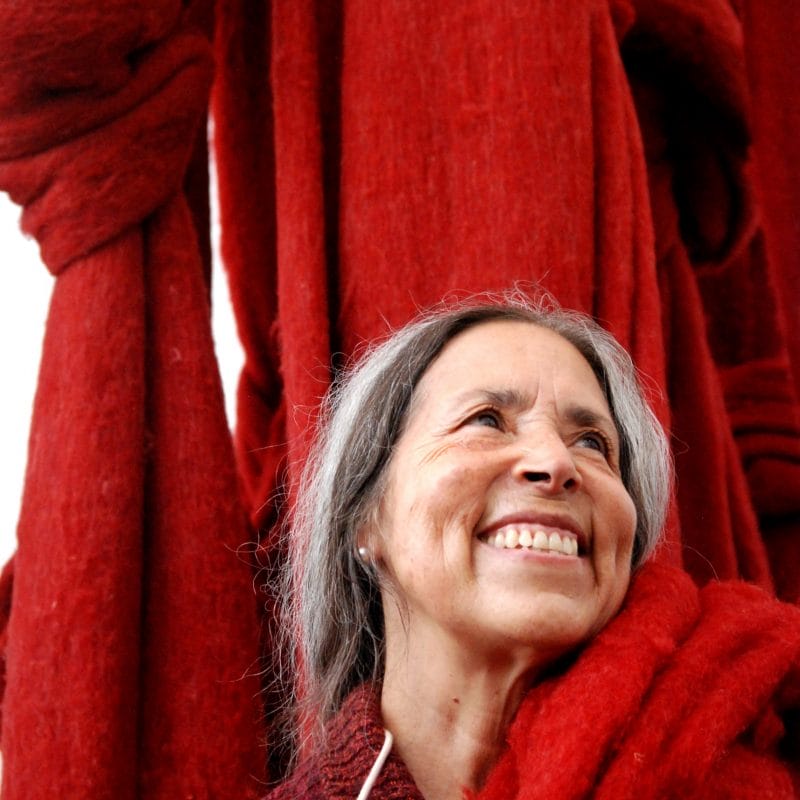Cecilia Vicuña. A poem of knots and threads
*Featured photo: Cecilia Vicuña at the 59th International Art Exhibition – La Biennale di Venezia, The Milk of Dreams. Installation view, photo by Marco Cappelletti. Courtesy the artist; La Biennale di Venezia; and Lehmann Maupin, New York, Hong Kong, Seoul, and London
“Art is not what you think it is; it is what is going to happen. It is consciousness and awareness”.
Cecilia Vicuña
NAUfraga is the installation that Chilean artist Cecilia Vicuña (Santiago 1948) conceived for the 59th Venice Biennale. Taken from the Latin words navis (ship) and frangere (to break), NAUfraga is the symbol, she tells us, of “our failure to take care of the earth”. A reflection on the wretched exploitation of natural resources slowly causing the city of the doges to sink, like many other lands scattered around the world. Ropes, string and small detritus, found around Venice and worthy of Borges’ clochard (shells, bits of plastic, scraps of nets, ropes, straw threads…), remain suspended in space like the feathers of Indian amulets, weightless and defenceless, at the mercy of the wind and the spirits.
Fragile, worn and defenceless, Cecilia’s remains are lost in the world’s neglect, faint traces of a time gone by, presences that do not claim a material value but rather a poetic and evocative one. The work, explains the artist, is, in fact, a journey “towards the Lagoon’s memory, its vegetation and the ropes knotted by its first inhabitants” it is a catalogue of small ephemeral things, the remembrance of ancient gestures. Still, it is also a plea for hope: “may the rustling of its twigs move our hearts that we may care for the Earth’ because the Earth cares for us.
In the places of the ancient Aymara and Mapuche, the sun, the wind, the water and the frogs watched over baby Cecilia: ‘My parents were very young when I was born. My mother would wave me goodbye in the morning, ‘See you later, she said, and then disappeared for the whole day. I was left alone in the middle of the large irrigation canals: I could have drowned, but I didn’t: the frogs, the wind and the sun took care of me. I felt embraced and protected by nature, and I still do.’
Cecilia is the daughter and granddaughter of intellectual activists. Her grandfather was a lawyer-writer who always fought for civil rights and defended Pablo Neruda against political persecution in 1948; her aunt was a sculptor, her father was an ecologist lawyer and her mother a singer. Cecilia is the sister of rivers and natural forces heir to the Quipu culture. This word literally means ‘knot’ ( from the Quechua khipu).
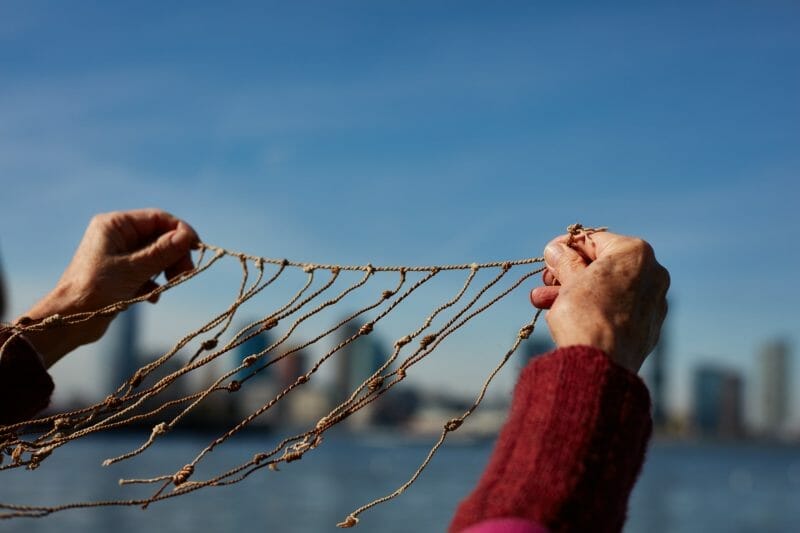
The Quipu was a mathematical system made of knots and coloured cords, used by the Incas, who had no writing, to store and transmit information. Vicuña has brought it back to life to entwine the threads of history with those of nature, the thin strings of humanity with the universe’s endless nature, attempting to awaken consciousness: “From my point of view, the Quipu is a way of letting people know that they are entering into another concept of space and time in relation to the cosmos”.
Her first Quipu was made in 1966 and was inspired by the images of a book on the Andean peoples borrowed from Aunt Rosa’s (the sculptress) library. She had called this work The Quipu that remembers nothing. Those strings represented music to her, an elegiac path of suspended threads and particles, promises, dreams, and poignant prayer. In her hands, the Quipu became conceptual and performative poetry, a constellation of human truths and reflections on the world’s fate.
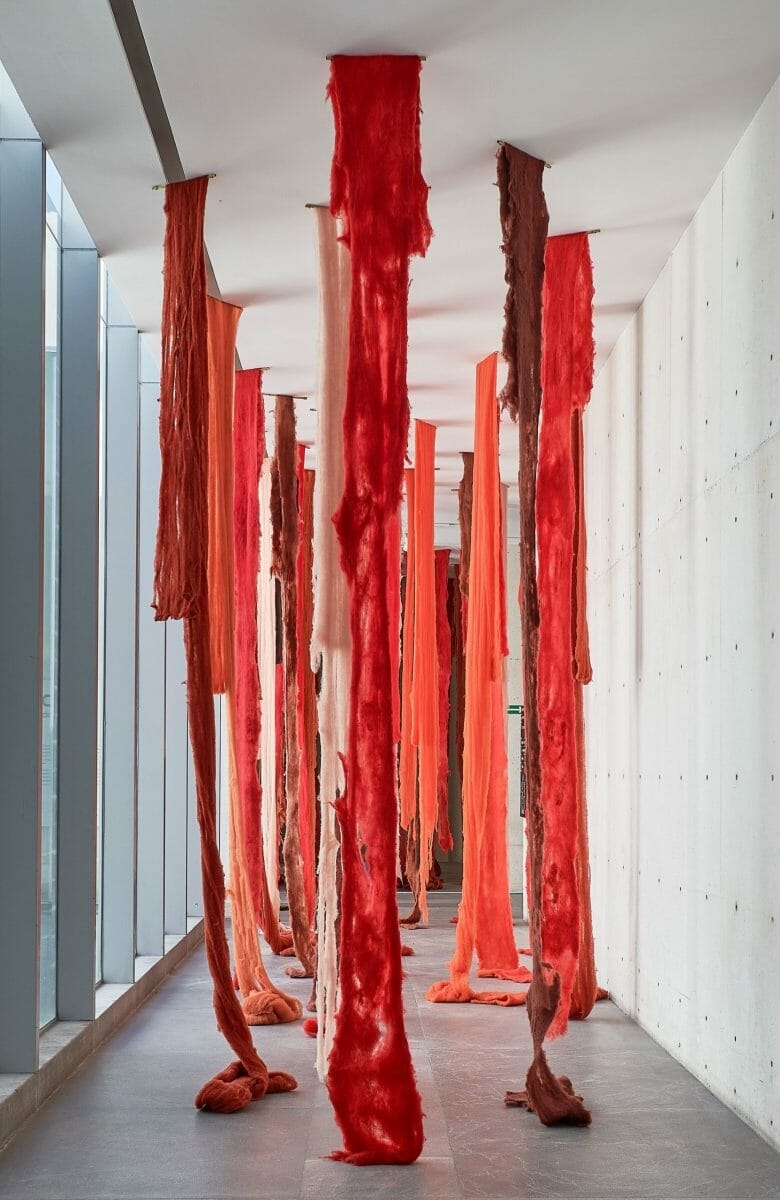
Cecilia Vicuña cultivated writing since she was 13 years old. Her art always stems from poetry, which, in turn, is nourished by memories, wisdom, rituals, history, the profound meaning of life, the search for justice and what makes us truly human. The Andes Quechua have managed to sum up a complex system in a single term: sonqon, the heart’s energy that moves into action, beauty and generosity. In Cecilia’s works, from paintings to installations, from written words to videos, there is a profound vitality, at times even painful, precisely because it arises from the awareness of our frailty and the idea that man is sea and demon, cosmos and Uku Pacha.
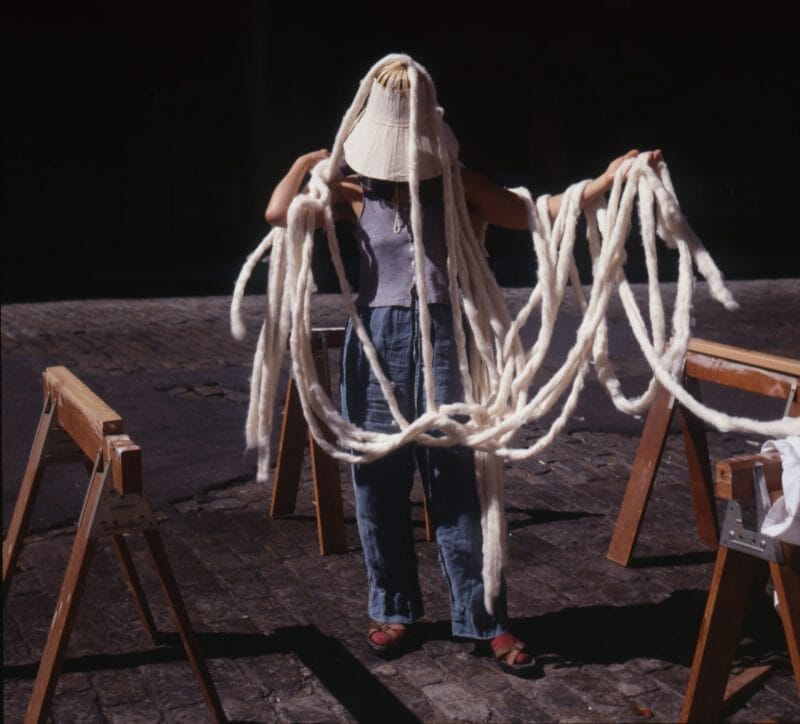
A committed feminist and activist, Cecilia’s life has been marked by intense encounters and experiences. In her twenties, after travelling through New York, Los Angeles and Berkeley, she was in Mexico City, living in British surrealist artist Leonora Carrington’s house. Looking at her painting, Cecilia realised that this was the proper method to convey the images in her mind and speak to the world. This resulted in paintings populated by female figures with primitive and simplified features, carrying a wealth of colours, nature, fears and knowledge.
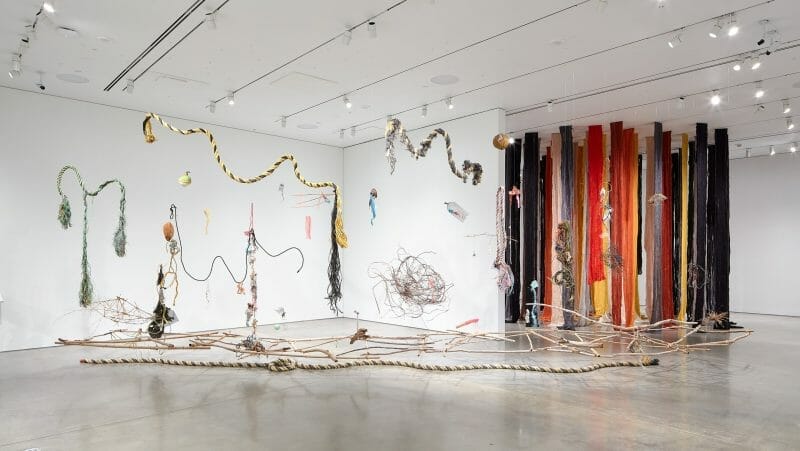
In 1969 she exhibited her paintings in a solo show at the Museo National de Bellas Arte in Santiago. Meanwhile, in the mid-1960s, she had begun a series of tiny sculptures that she called Precarios. Fastened together with a simple string, interwoven feathers, stones, wood, shells, fabric, and other debris were intended to narrate the precariousness of existence through their own fragility. Andrea Andersson, the curator of the Contemporary Art Center in New Orleans, calls these works “an aesthetic of exile”.
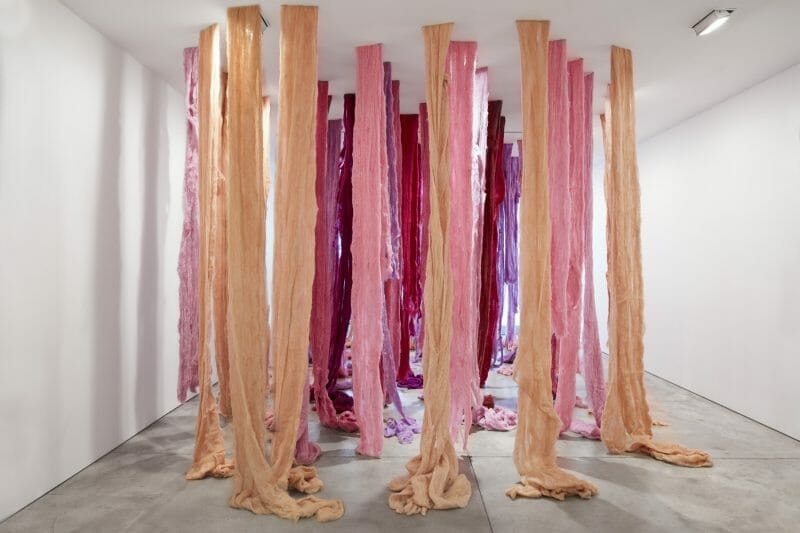
Vicuña had chosen exile in the early 1970s. She was in London when the violent military coup against former Chilean President Salvador Allende kept her from returning. From that point on, the sense of impermanence that had already accompanied her creations intensified and, with it, the desire to preserve her country’s history and culture. She also layered increasingly urgent issues such as ecology, the sense of community, and the need for social justice in her works.
Getting lost among her long coloured columns of gauze, being caressed by her soft woollen ropes or getting caught in her cords (like wandering particles) is for the spectator an initiatic journey, a path that leads from the origins to the future, and vice versa, always passing through the self.
As if it was today, I remember the marvellous circle of red, raw wool lianas that, similar to burning rosaries, were hung from the ceiling of the 14th Documenta in Athens after having been “baptised” in the fertile and mythical waters of the Aegean Sea. That was in 2017, and, even then, I was struck by the intense lyrical quality of a work that delved into the harsh reality of things while offering you a rope for the path of salvation.

Cecilia Vicuña’s research has been consistent, tenacious, and half a century long. She was awarded the Golden Lion for Lifetime Achievement at this year’s Biennale, which will soon be celebrated with a site-specific installation at the Tate’s Turbine Hall in London (from 13 October 2022 to 16 April 2023).
